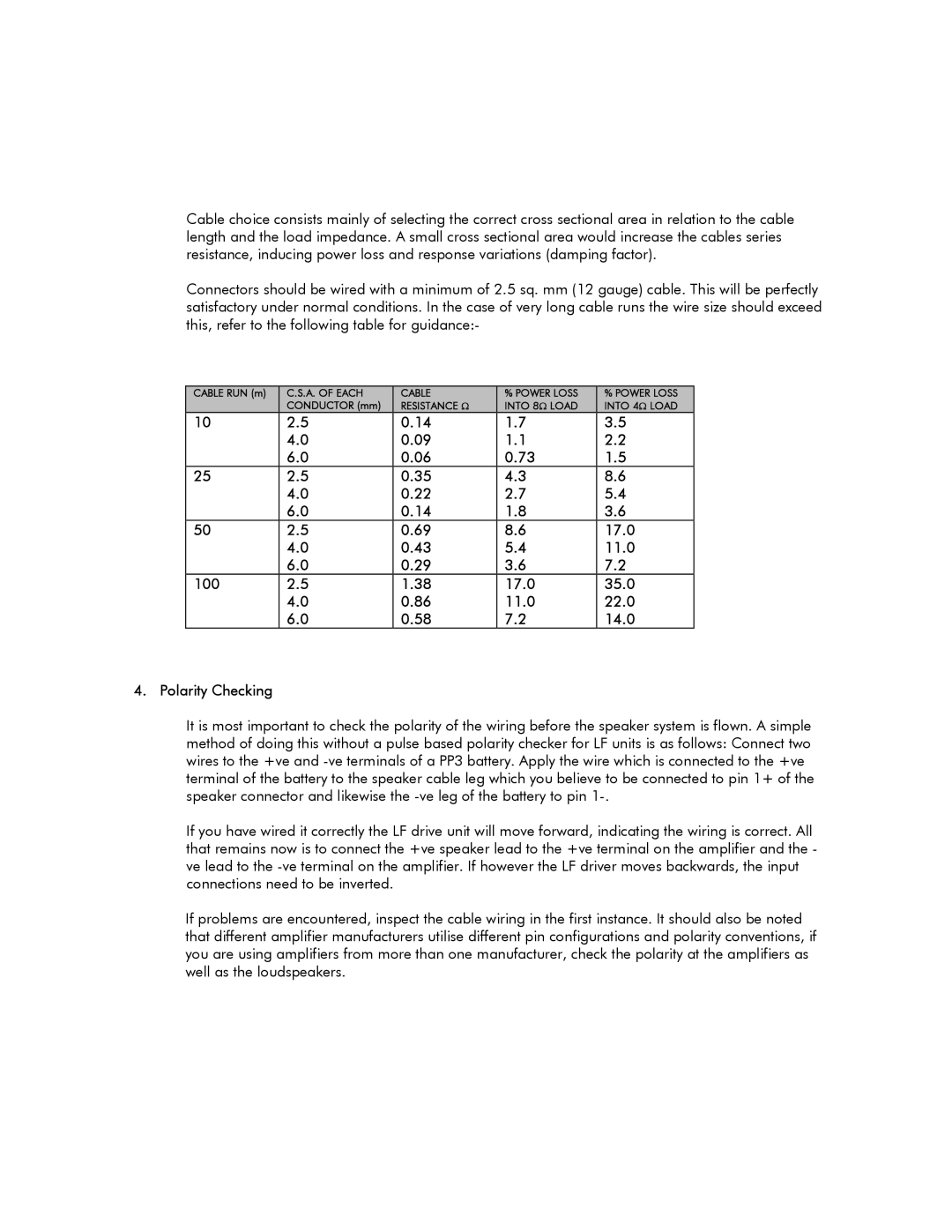V12 HP specifications
The Tannoy V12 HP is a powerful and highly regarded loudspeaker, engineered to meet the demanding requirements of professional sound reproduction across various applications. This model is part of Tannoy's extensive range of high-performance monitoring speakers, combining innovative technologies with superior construction to deliver outstanding audio fidelity.One of the most prominent features of the V12 HP is its dual concentric driver design, which is a hallmark of Tannoy products. The 12-inch mid-bass driver is perfectly integrated with a high-frequency compression driver, positioned at the acoustic center of the woofer. This design allows for a coherent soundfield and precise imaging, ensuring that even the most intricate musical details are clearly rendered.
The V12 HP is built with robust and durable materials, which not only enhance the speaker's longevity but also improve its acoustic performance. The cabinet is constructed from high-grade plywood and features a rugged finish that can withstand the rigors of professional use. Its curved cabinet shape helps to minimize resonance and distortion, leading to a cleaner and more accurate sound reproduction.
In terms of technology, the V12 HP incorporates a sophisticated crossover design. This ensures seamless integration between the low and high-frequency drivers while maintaining a linear frequency response. The crossover points are finely tuned to optimize performance across various sound frequencies, making the V12 HP suitable for both music production and live sound reinforcement.
The speaker's frequency response spans an impressive range, allowing it to reproduce low-end frequencies with power and clarity while delivering crisp and detailed highs. The V12 HP is capable of handling significant power, making it suitable for use in a variety of environments, from recording studios to auditoriums.
Connectivity is made convenient with balanced XLR and TRS inputs, providing compatibility with a wide range of audio equipment. The inclusion of a rear-panel EQ gives users the ability to make adjustments based on their specific acoustic environment, enabling a tailored listening experience.
In conclusion, the Tannoy V12 HP stands out as a versatile and high-quality loudspeaker that combines innovative design, robust build quality, and advanced audio technologies. Its unique features make it an invaluable tool for professional sound engineers, musicians, and audiophiles alike, ensuring it delivers exceptional performance across diverse sound applications.
